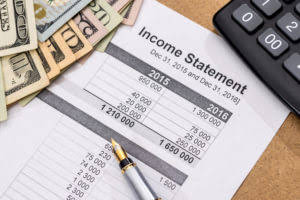
The lower the taxable income, the lower the amount of taxes owed to the government, hence, tax savings for the taxpayer. By spreading the cost evenly, it helps in accurately reflecting the asset’s decreasing value over time on the company’s financial statements. The book value of an asset is crucial for financial reporting and determining the amount of depreciation expense to be recognized each accounting period. The depreciable basis established through this method is fundamental for tax purposes, as it influences the tax deductions related to the asset’s depreciation over its useful life. A depreciation tax shield is a tax reduction technique under which depreciation expense is subtracted from taxable income. The amount by which depreciation shields the taxpayer from income taxes is the applicable tax rate, multiplied by the amount of depreciation.
- Below we have also laid out the Depreciation Tax Shield calculations using the Sum of Years Digits approach.
- This reduction in taxable income allows businesses to retain more of their earnings, enabling them to invest in growth opportunities or allocate funds towards operational enhancements.
- As for the taxes owed, we’ll multiply EBT by our 20% tax rate assumption, and net income is equal to EBT subtracted by the tax.
- Master the fundamentals of financial accounting with our Accounting for Financial Analysts Course.
Impact of Accelerated Depreciation on the Depreciation Tax Shield
This reduction in taxable income allows businesses to retain more of their earnings, enabling them to invest in growth opportunities or allocate funds towards operational enhancements. By utilizing depreciation expenses as tax deductions, businesses can strategically manage their tax liabilities, thereby optimizing their financial resources. Depreciation tax shield offers several benefits, including the reduction of taxable income, lower tax liability, and increased tax savings, thereby enhancing financial reporting and cash flow.
- They can claim $2,000 in depreciation expense each year, which will reduce their taxable income and result in tax savings.
- The straight-line depreciation method allocates the cost of fixed assets evenly over their useful lives, determining book value and depreciable basis for calculating depreciation tax shield.
- The booked Depreciation Tax shield is under the Straight Line method as per the company act.
- Therefore, depreciation is perceived as having a positive impact on the free cash flows (FCFs) of a company, which should theoretically increase its valuation.
- So, conclusively, we can say that the concept is more practical and effective when the annual depreciation expense and tax rates are higher.
- The recognition of depreciation causes a reduction to the pre-tax income (or earnings before taxes, “EBT”) for each period, thereby effectively creating a tax benefit.
- It provides businesses with a valuable opportunity to enhance their cash flow by retaining a higher portion of their earnings, fueling potential growth and investment opportunities.
Struggling with Financial Accounting?
It can also influence the perceived value of corporate assets on financial statements, affecting investors’ perceptions and potential investment decisions. As such, managing the implications Bookkeeping vs. Accounting of changing depreciation rates becomes crucial for effective asset management and financial planning. This variation in depreciation rates can impact the financial health of a company, influencing the timing of asset acquisition and disposal.
Depreciation: Summary of Main Methods practice set
Upon completion, earn a recognized certificate to enhance your career prospects in finance and investment. Then, our management makes a depreciation tax shield as a way to inspire certain behavior in certain businesses or programs. Hence, the proper use of a depreciation tax shield is most suitable in asset intensive trades. This approach allows the taxpayer to identify a large sum of depreciation as a chargeable expense through the first few years of a fixed asset. This machinery has an estimated useful life of 10 years and a salvage value of $10,000. As for the taxes owed, we’ll multiply EBT by our 20% tax rate assumption, and net income is equal to EBT subtracted by the tax.
Anyone preparing to use the depreciation tax shield should deliberate the use of accelerated depreciation. A depreciation tax shield is a tax evaded causing by the deduction of depreciation in assets. We can analyze the taxable income with the assistance of multiplication of tax rate with reduction expense. The depreciation tax shield helps the company to maintain all the depreciation of the assets. Corporations using accelerated depreciation techniques can save dues because of the greater value of the tax shield.
- We note from above that the Tax Shield has a direct impact on the profits as net income will come down if depreciation expense is increasing, resulting in less tax burden.
- However, when it is deducted from taxable income, it has a positive cash flow effect in the form of tax saving – the depreciation tax shield.
- With the two methods clarified, let’s look at the Cash Flow impact of each approach.
- Depreciation Tax Shield is the tax saved resulting from the deduction of depreciation expense from the taxable income and can be calculated by multiplying the tax rate with the depreciation expense.
- This depreciation tax shield allows Company A to deduct the depreciation expense from its taxable profit, thus reducing the overall tax burden.
- A depreciation tax shield is a tax-saving benefit applied to income generated by businesses.
What is the difference between Depreciation Tax Shield and Tax Deduction?
The depreciation tax shield works well in asset-intensive companies, like the ones involved in manufacturing, processing, transportation and telecommunication businesses. These companies generally operate through a lot of noncurrent assets on which a large amount of depreciation can be calculated and deducted from taxable income. The service organizations, on the other hand, need only a few fixed assets to run their operations. In these organizations, the amount of annual depreciation charge is generally immaterial, and hence the amount of resulting tax shield. Depreciation Tax Shield is the tax saved resulting from the deduction of depreciation expense from the taxable income and can be calculated by multiplying the tax rate with the depreciation expense.

This method allows for a front-loaded depreciation expense, reflecting higher deductions in the earlier years and gradually tapering off in later years. It directly affects the book value of the asset, which is the asset’s original cost minus the accumulated depreciation. The lower book value results in a lower depreciable basis for subsequent years, influencing the calculation of the depreciation tax shield. This strategy allows businesses to shield taxable income from corporate taxes, ultimately reducing the overall tax liability.
- The concept is significant while making financial decisions in any capital-intensive business.
- Below are the Depreciation Tax Shield calculations using the Straight-Line approach.
- This type of expenditure allows the company to allocate the cost of the machine over its useful life, providing tax benefits through the depreciation tax shield.
- The ability to use a home mortgage as a tax shield is a major benefit for many middle-class people whose homes are major components of their net worth.
- The depreciable basis established through this method is fundamental for tax purposes, as it influences the tax deductions related to the asset’s depreciation over its useful life.
- An individual may deduct any amount attributed to medical or dental expenses that exceeds 7.5% of adjusted gross income by filing Schedule A.

In the section below, we cover two of the most common methods and their Cash Flow and Valuation impacts. There are a variety of deductions that can shield a company (or Individual) from paying Taxes. The difference in EBIT amounts to $2 million, entirely attributable to the depreciation expense. The real cash outflow stemming from capital expenditures has already occurred, however in U.S. In the above article, you get to know the importance and every single aspect of the tax shield. Accelerated depreciation is that technique whereby asset losses book value at a quicker rate than the old style method.

Taxpayers who have paid more in medical expenses than covered by the standard deduction can choose to itemize in order to gain a larger tax shield. An individual may deduct any amount attributed to medical or dental expenses that exceeds 7.5% of adjusted gross income by filing Schedule A. Usually, this method permits greater deduction in the last years of assets that one uses to reduce taxable income. The tax shield is the discount in the taxable income by the way of demanding the deduction. The limitation of not accounting for inflation in depreciation tax shield can affect asset management strategies and may run contrary to certain accounting principles focused on maintaining the the depreciation tax shield is best defined as the value of assets.
📊 Master Excel & Finance SkillsJoin 100K+ Learners⚡Up to 80% OFF!Instructor: Dheeraj Vaidya, CFA, FRM
Leveraging depreciation tax shield is a crucial aspect of effective tax management and financial planning for businesses and individuals income summary alike. Depreciation tax shield refers to the tax-saving benefit obtained from the depreciation of an asset for accounting and tax purposes. It is necessary to understand the importance of the concept of depreciation tax shield equation in the corporate environment as a temporary benefit to save taxes.

